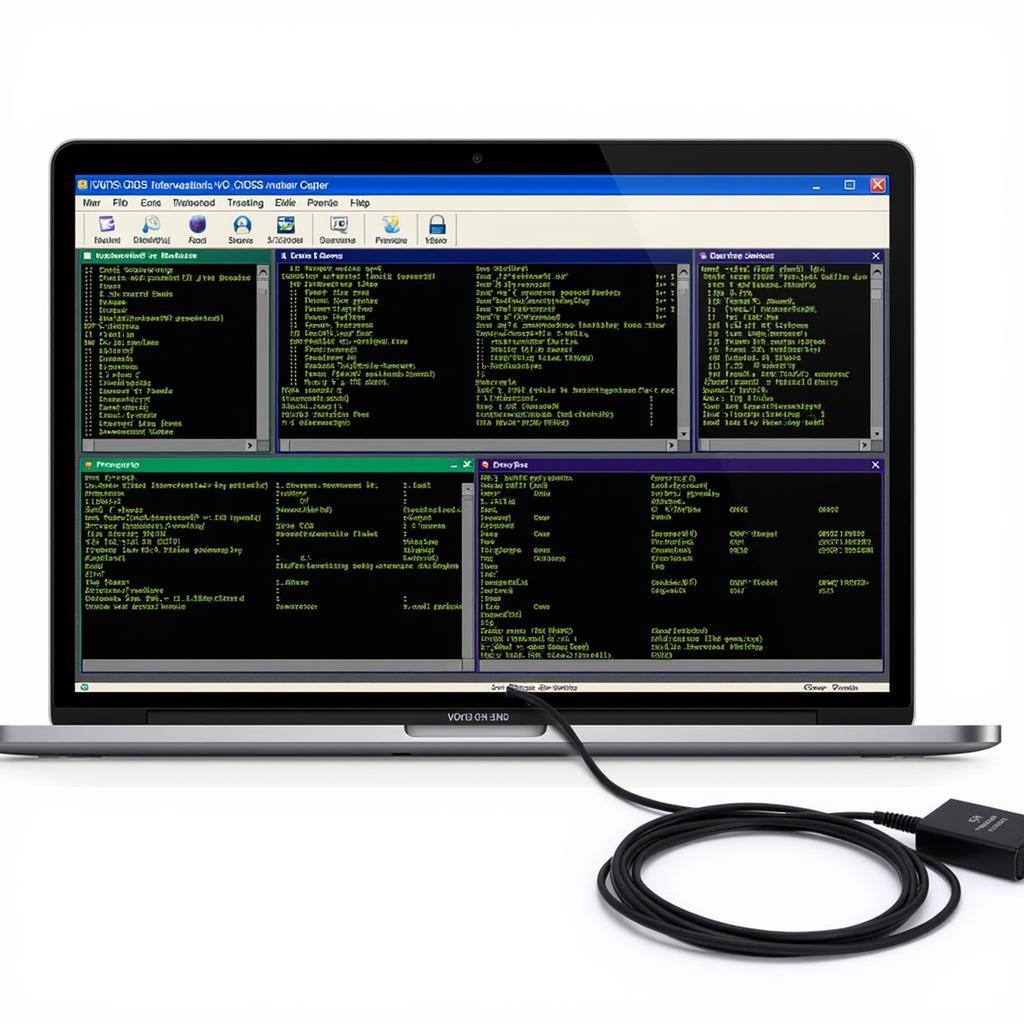VCDS accelerator pedal calibration is a crucial procedure for maintaining optimal vehicle performance. It involves using the VCDS software to fine-tune the electronic throttle control system, ensuring accurate throttle response and preventing issues like rough idling, hesitation, or limp mode. This article will delve into the intricacies of this process, providing valuable insights for car owners, mechanics, and automotive technicians alike.
Understanding the Need for VCDS Accelerator Pedal Calibration
Why would you need to calibrate your accelerator pedal? Modern vehicles rely on electronic throttle control (ETC), a system that replaces traditional mechanical linkages with electronic sensors and actuators. Over time, these components can wear down or become misaligned, leading to inaccurate throttle readings. This can manifest as various driveability problems, affecting both performance and fuel efficiency. vcds throttle body alignment.
The VCDS (Vag-Com Diagnostic System) software provides a powerful interface to access and adjust the vehicle’s electronic control units (ECUs), including the one responsible for the ETC. Performing a VCDS accelerator pedal calibration essentially resets the ECU’s understanding of the pedal’s position, ensuring that the throttle opens and closes correctly in response to driver input. This procedure is often necessary after replacing the throttle body, accelerator pedal, or related components, but it can also be beneficial as a preventative maintenance measure.
Performing a VCDS Accelerator Pedal Calibration: Step-by-Step Guide
Calibrating the accelerator pedal with VCDS is a relatively straightforward process, but it’s essential to follow the correct steps to avoid potential problems. Here’s a detailed guide:
- Connect the VCDS interface to the vehicle’s OBD-II port and launch the software.
- Select the correct vehicle model and control module.
- Go to the “Basic Settings” function within the selected module. vcds basic settings groups
- Follow the on-screen prompts to initiate the accelerator pedal calibration procedure.
- Turn the ignition on but do not start the engine.
- Depress the accelerator pedal fully and hold it for a specified duration (usually a few seconds).
- Release the accelerator pedal.
- Wait for the VCDS software to confirm successful calibration.
Common Issues and Troubleshooting
Sometimes, the calibration process may not complete successfully. This could be due to several reasons, such as a faulty accelerator pedal sensor, a low battery voltage, or a communication error between the VCDS interface and the ECU. If you encounter problems, check the VCDS software for error codes and consult the vehicle’s repair manual for troubleshooting guidance.
What if the car still exhibits symptoms after calibration? If the driveability problems persist even after a successful calibration, it’s crucial to investigate other potential causes. This might involve checking for vacuum leaks, inspecting the throttle body for carbon buildup, or diagnosing other components within the ETC system. Don’t automatically assume that the calibration failed; it’s just one piece of the puzzle.
How often should you calibrate the accelerator pedal?
There isn’t a strict schedule for accelerator pedal calibration. It’s often recommended after replacing related components, but it can also be done as a preventative measure if you notice any driveability issues. Some mechanics even suggest including it as part of a regular maintenance routine.
Is it necessary to calibrate the accelerator pedal after a battery disconnect? While it’s not always strictly necessary, some vehicles may require recalibration after a battery disconnect, especially if the ECU loses its learned values. It’s best to consult the vehicle’s repair manual or contact a qualified technician to determine the specific requirements for your car model.
Conclusion
VCDS accelerator pedal calibration is an essential procedure for ensuring optimal performance and driveability in modern vehicles. By understanding the process and following the correct steps, you can address many common throttle-related issues and maintain the health of your vehicle’s electronic throttle control system. While VCDS accelerator pedal calibration is a helpful tool, it’s important to remember it’s only one part of maintaining your vehicle’s health.
FAQs
-
What is VCDS? VCDS is diagnostic software used to interface with Volkswagen, Audi, Seat, and Skoda vehicles.
-
Why is accelerator pedal calibration necessary? Calibration ensures accurate throttle response and prevents driveability issues.
-
How often should I calibrate the accelerator pedal? It’s often recommended after replacing related components or as preventative maintenance.
-
What if the problem persists after calibration? Investigate other potential causes within the ETC system.
-
Is it necessary after a battery disconnect? Consult your vehicle’s repair manual or a qualified technician.
-
Can I do this myself? Yes, with the VCDS software and by following the instructions.
-
What are the symptoms of a miscalibrated accelerator pedal? Rough idling, hesitation, and limp mode are common symptoms.
Need assistance? Contact us via Whatsapp: +1 (641) 206-8880, Email: CARDIAGTECH[email protected] or visit us at 276 Reock St, City of Orange, NJ 07050, United States. We offer 24/7 customer support.

